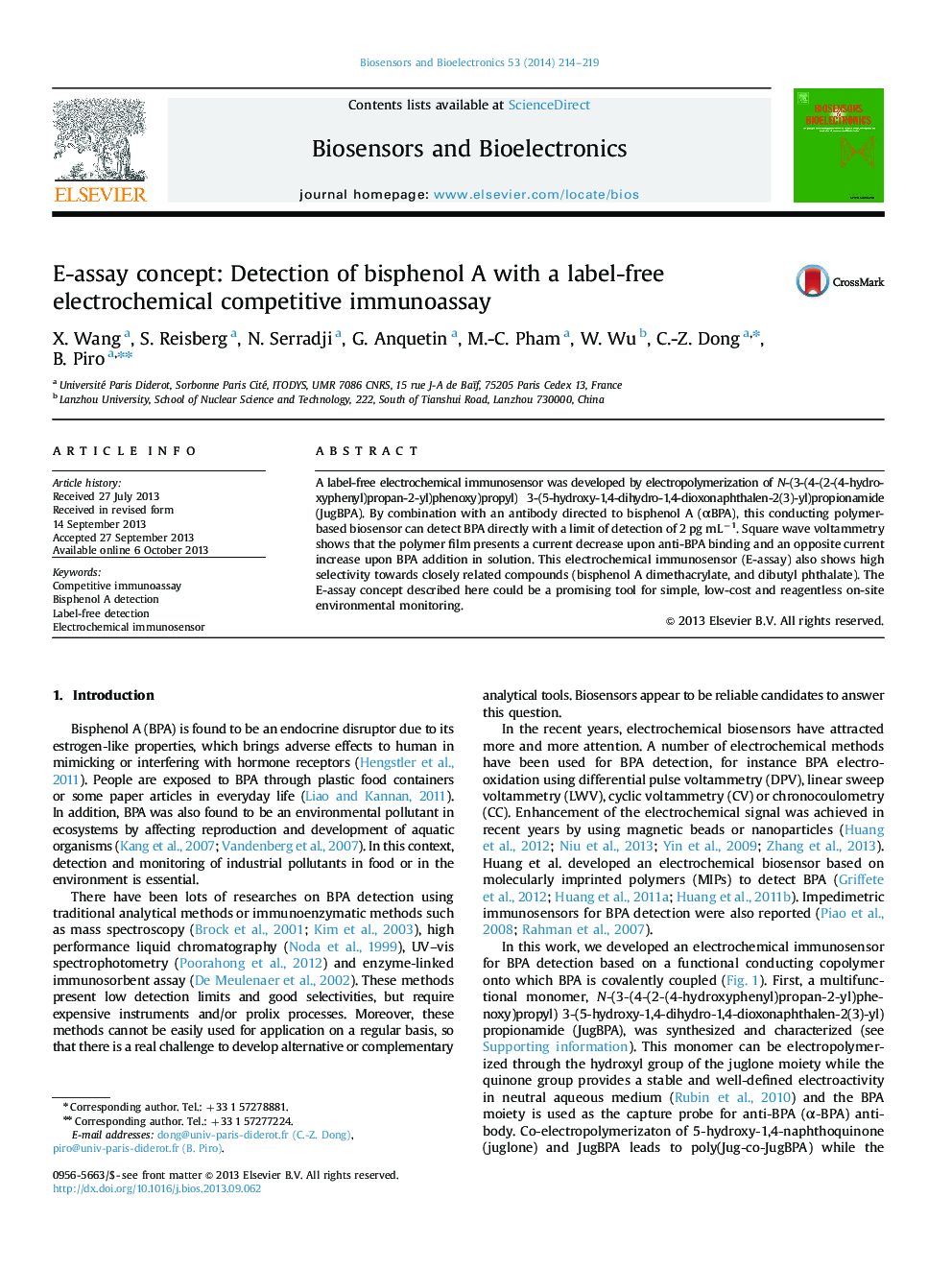| Article ID | Journal | Published Year | Pages | File Type |
|---|---|---|---|---|
| 866694 | Biosensors and Bioelectronics | 2014 | 6 Pages |
•Direct, label-free electrochemical immunosensor against bisphenol A.•Positive current change upon bisphenol A detection.•Extremely low detection limit of ca. 1 pM, i.e. 2 pg L−1.•High selectivity towards closely related compounds.
A label-free electrochemical immunosensor was developed by electropolymerization of N-(3-(4-(2-(4-hydroxyphenyl)propan-2-yl)phenoxy)propyl) 3-(5-hydroxy-1,4-dihydro-1,4-dioxonaphthalen-2(3)-yl)propionamide (JugBPA). By combination with an antibody directed to bisphenol A (αBPA), this conducting polymer-based biosensor can detect BPA directly with a limit of detection of 2 pg mL−1. Square wave voltammetry shows that the polymer film presents a current decrease upon anti-BPA binding and an opposite current increase upon BPA addition in solution. This electrochemical immunosensor (E-assay) also shows high selectivity towards closely related compounds (bisphenol A dimethacrylate, and dibutyl phthalate). The E-assay concept described here could be a promising tool for simple, low-cost and reagentless on-site environmental monitoring.
